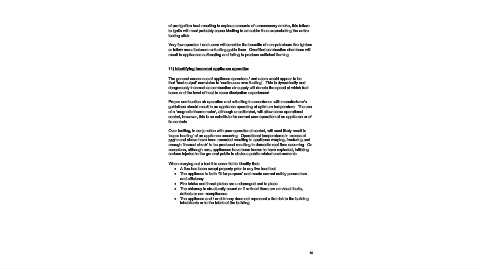Page 62 - Domestic Smoke Nuisance and Emissions Final_Neat
P. 62
of pre-ignition heat resulting in copious amounts of unnecessary smoke, this failure
to ignite will most probably cause kindling to smoulder thus exacerbating the entire
testing affair.
Very few operator / end users will consider the benefits of non-petroleum fire lighters
or follow manufacturers re-fuelling guide lines. Overfilled combustion chambers will
result in appliances suffocating and failing to produce sufficient flaming.
11) Identifying incorrect appliance operation
The general consensus of appliance operators / end users would appear to be
that ‘heat output’ correlates to ‘continuous over fuelling’. This is dynamically and
dangerously incorrect as combustion air supply will denote the speed at which fuel
burns and the level of heat to room dissipation experienced.
Proper combustion air operation and refuelling in accordance with manufacturer’s
guidelines should result in an appliance operating at optimum temperature. The use
of a ‘magnetic thermometer’, although uncalibrated, will allow some operational
control, however, this is no substitute for correct user operation of an appliance or of
its controls.
Over fuelling, in conjunction with poor operational control, will most likely result in
‘super heating’ of an appliance occurring. Operational temperatures in excess of
o
260 c and above have been recorded resulting in appliance warping, fracturing and
enough ‘thermal shock’ to be produced resulting in domestic roof fires occurring. On
occasions, although rare, appliances have been known to have exploded, inflicting
serious injuries to the general public in obvious public related environments.
When carrying out a test it is essential to identify that:
• A flue has been swept properly prior to any live load test
• The appliance is both ‘fit for purpose’ and meets current safety parameters
and efficiency
• Fire bricks and throat plates are undamaged and in place
• The chimney is structurally sound or if re-lined there are no visual faults,
defects or non-compliances
• The appliance and / or chimney does not represent a fire risk to the building
inhabitants or to the fabric of the building.
10

